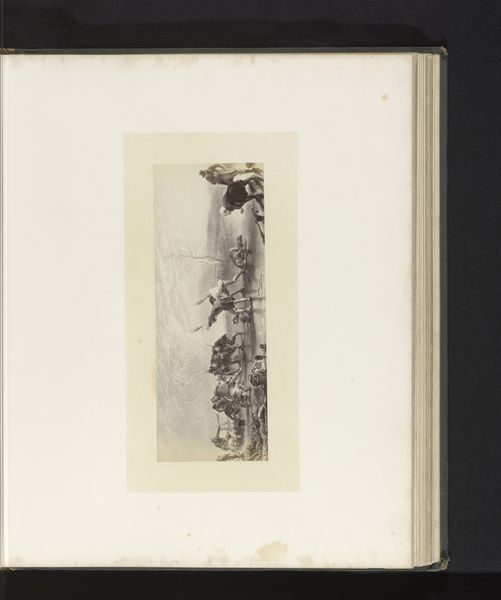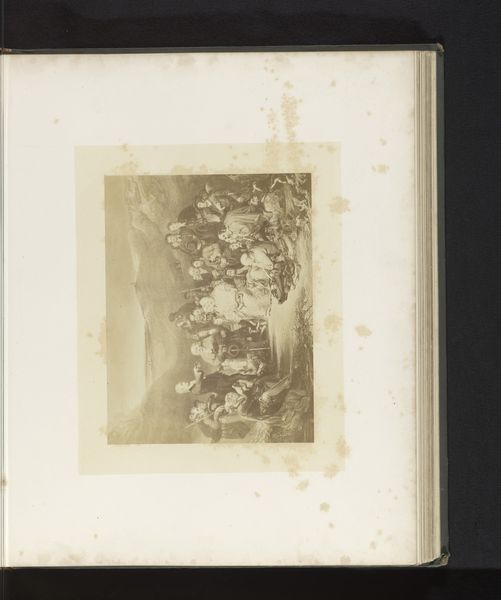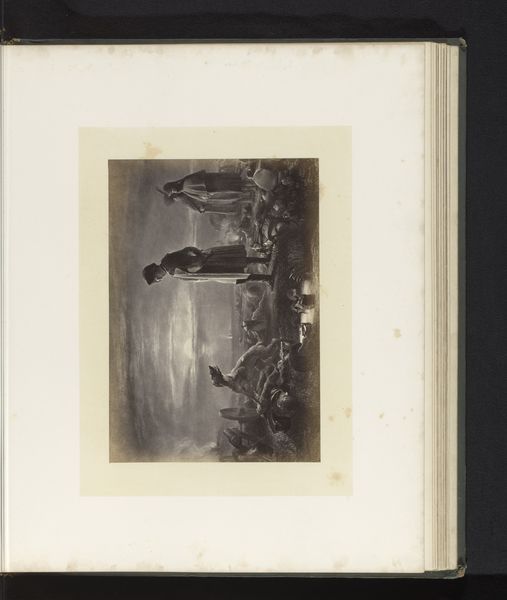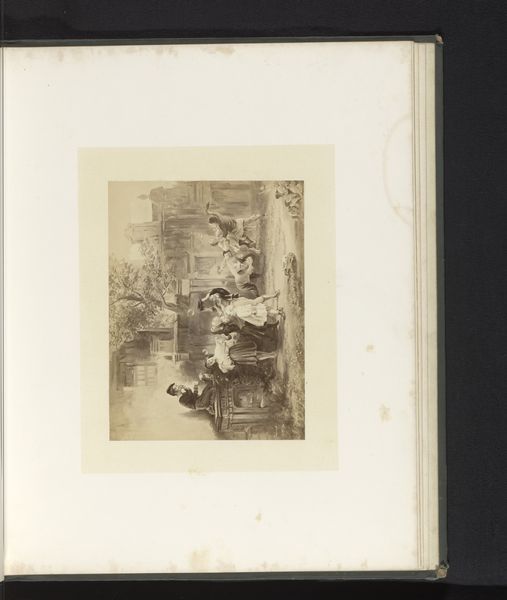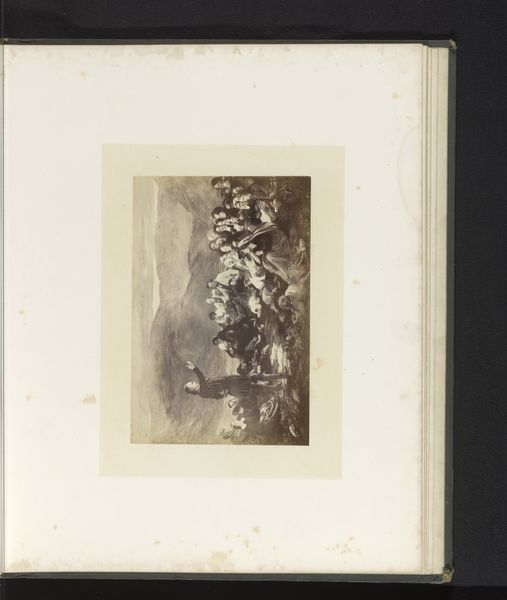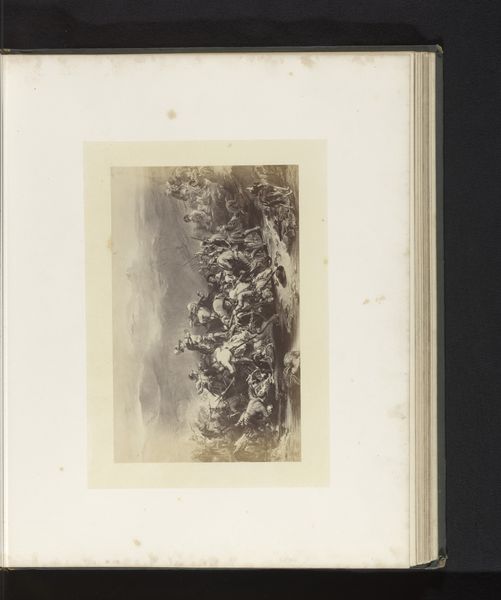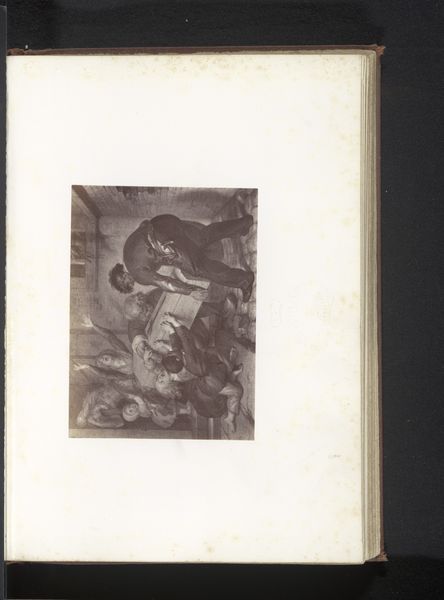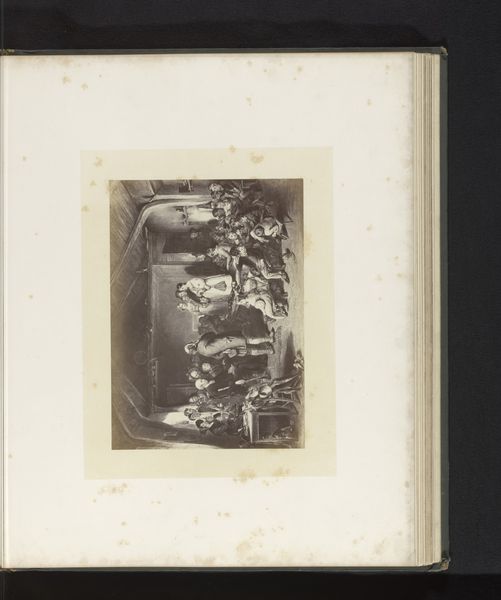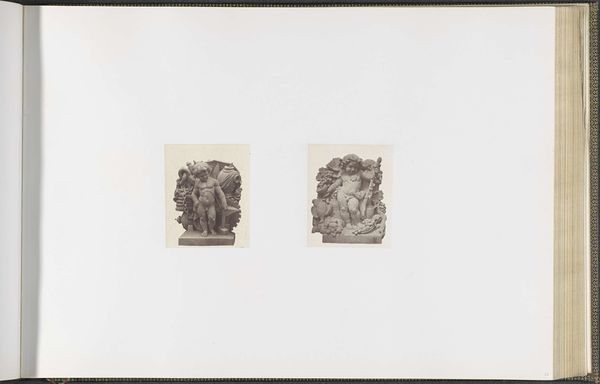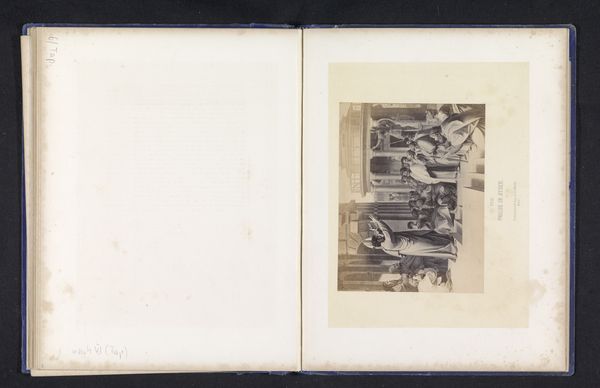
Fotoreproductie van een gravure van First Reading of the Bible in the Crypt of Old St Paul's - Anno 1540, naar het schilderij door Sir George Harvey before 1870
0:00
0:00
print, photography, gelatin-silver-print
# print
#
sculpture
#
photography
#
gelatin-silver-print
#
genre-painting
#
history-painting
#
realism
Dimensions: height 168 mm, width 247 mm
Copyright: Rijks Museum: Open Domain
Editor: This is a photogravure before 1870, made by Thomas Annan, recreating Sir George Harvey's painting, "First Reading of the Bible in the Crypt of Old St Paul's - Anno 1540." The light and shadow create such a dramatic atmosphere! What's your perspective on this image? Curator: Considering its medium – a gelatin silver print, reproducing a painting depicting a historical event – I'm drawn to think about the layers of production and consumption here. The initial labor of the painter, Harvey, is mediated through the mechanical process of photography and printmaking, then consumed as a readily reproducible image. What does it mean to depict a historical event through this chain of processes? Editor: I hadn’t thought about it that way, but that's really interesting! The image itself seems to idealize a moment of religious enlightenment, but the material reality is mass production. Curator: Exactly! The availability of such prints altered art appreciation. Consider the societal impact – photography democratized image ownership, enabling a wider audience to 'possess' and interpret such narratives. Is this truly democratization, though, or just another form of industrial standardization and control of religious imagery? Editor: I see your point. So, even though the subject matter points to freedom, the means of production might suggest the opposite? Curator: Precisely. How does mass production of this historical scene change how we perceive both religion and history? Moreover, by focusing on process and accessibility, how does this undercut art history’s traditional emphasis on originality? Editor: That's really given me a lot to think about regarding access and control. Curator: And it challenges us to re-evaluate historical paintings within a landscape increasingly dominated by the photograph and mechanical reproduction.
Comments
No comments
Be the first to comment and join the conversation on the ultimate creative platform.
